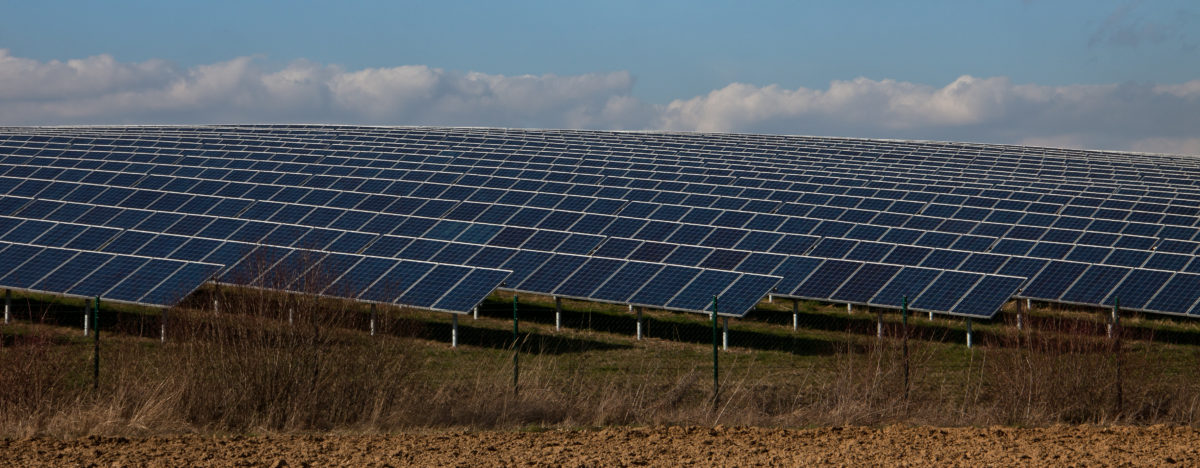It was something of a surprise when solar outperformed wind in Ireland’s first renewable energy auction, finalized in early August.
Solar secured 796.3 MW of generation capacity, versus 479.2 MW for wind, and undershot the average electricity price across the whole exercise with a mean PV figure that was €1.16/MWh lower.
“The results of the solar technology in Ireland’s first renewable energy auction a little bit exceeded my expectations,” said Harsh Goenka, who works in business development at Slovakian solar forecasting company Solargis. “But this came as a surprise only initially and when I went deep into analyzing the results, it became clear to me not too many offers were made for wind power projects.”
Implementation
Goenka told pv magazine a tight deadline for completing projects favored PV.
“The biggest bottlenecks for wind are administrative, and [the] time frame for construction can take more than a year,” confirmed Solargis MD Marcel Suri. “As for big solar projects with [a] size of 50 MW or more, construction is now a matter of months.”
A more competitive strike price for solar – which Irish grid operator Eirgrid reported came in at an average €72.92/MWh, compared to €74.08 for the entire tender – also appears to have given PV the edge.
And that cheap solar power price is only likely to get lower, according to Goenka, who said: “This final price is higher that those of similar European auctions but this is due to slightly lower radiation resources and to the fact the prices of the Irish auction are not indexed to inflation.”
The shorter, 15-year length of power purchase agreements (PPAs) offered by the Irish authorities may also have driven up the solar energy price, said Goenka. “Investors may feel more confident with 20-year deals, so the higher costs of financing may have also determined higher final prices compared to other European countries, where [the] time frame is often 20 or 25 years,” he said.
The small size of the solar projects allocated – 59 of them offering generation capacities of 2.5-15 MW – may also have been a factor in a solar power price above European levels. That is another area where there is room for improvement according to the Solargis representative, who speculated the next round of the tender program could see more facilities of the scale of the 119 MW biggest solar project awarded, as well as the two 95 MW plants and a 50 MW site. “Several projects belong to the same developers, which may take advantage of the portfolio effect,” Goenka said. “And, of course, the developers of the four big plants will benefit [from] economies of scale.”
Capacity factor
Ireland has a climate action plan which envisages only 1.5 GW of solar by 2030, said Goenka, “but looking at the results of this auction, I think we might see much more than that at the end of the decade. In this auction itself, solar had a capacity factor of approximately 15% instead of [the] anticipated 11%, while wind had 35%. If we consider this capacity factor, solar secured around 40% of [the] total allocated capacity. In the future, solar projects may even have a capacity factor of 15% or higher and this may help the solar technology achieve a share higher than 40% in the next auction.”
The first auction may also have a positive effect on the Irish unsubsidized PPA market as it may set a benchmark for future prices between €72.92/MWh and the spot market. “We may probably not see the PPA prices that we have seen in Spain but yes, we will definitely see the first PPAs being signed in the Irish renewable energy market,” said Goenka. “With the solar technology improving and costs going down, I think it will be a natural consequence: seeing more solar projects linked to PPAs in the near future.”
Goenka said he also sees potential for mixed solar and wind projects in Ireland, following the example of countries such as India and Denmark, where hybrid facilities participate in auctions. “Solar energy is very seasonal in Ireland and that means that in the months where [the] sun is not shining so much, the wind can take over,” he said. “While in summer months, solar can play the dominant role. Until now, wind has dominated the Irish renewable energy market but now solar is [in] position to get the more important role in the energy mix.”
This content is protected by copyright and may not be reused. If you want to cooperate with us and would like to reuse some of our content, please contact: editors@pv-magazine.com.




By submitting this form you agree to pv magazine using your data for the purposes of publishing your comment.
Your personal data will only be disclosed or otherwise transmitted to third parties for the purposes of spam filtering or if this is necessary for technical maintenance of the website. Any other transfer to third parties will not take place unless this is justified on the basis of applicable data protection regulations or if pv magazine is legally obliged to do so.
You may revoke this consent at any time with effect for the future, in which case your personal data will be deleted immediately. Otherwise, your data will be deleted if pv magazine has processed your request or the purpose of data storage is fulfilled.
Further information on data privacy can be found in our Data Protection Policy.